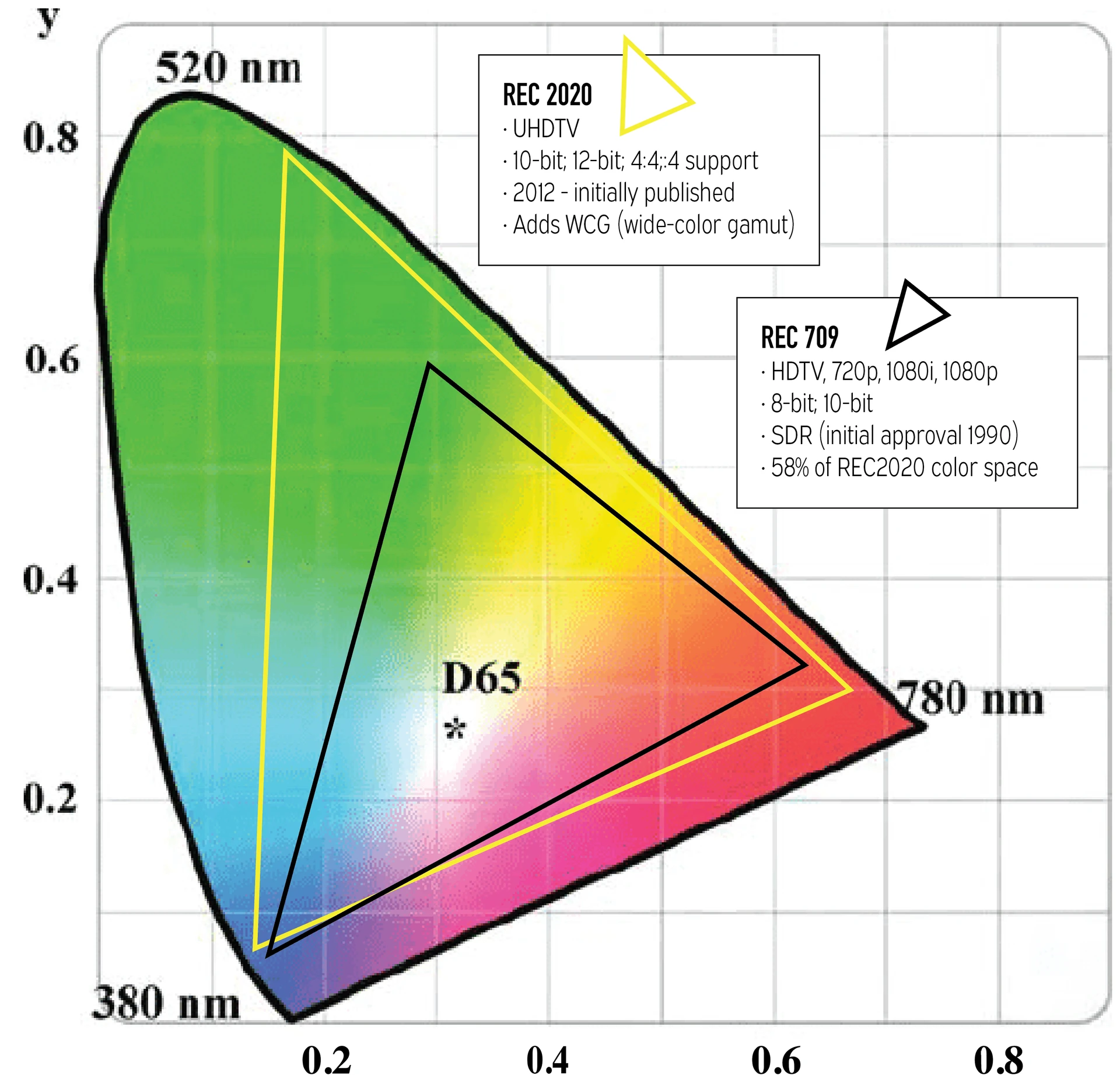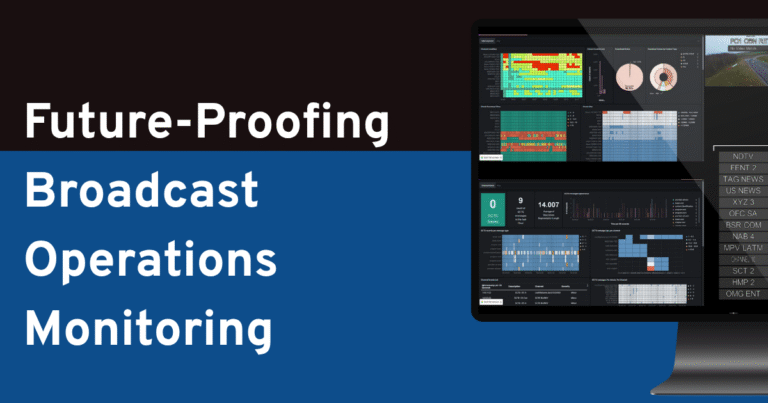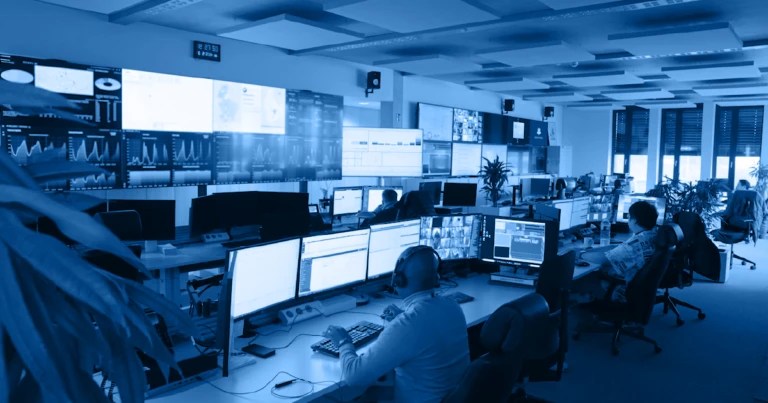High Dynamic Range (HDR) technology is redefining the visual standards of television, offering unprecedented brightness, contrast, and color that dramatically enhance the viewing experience. As the industry navigates the transition to HDR, broadcasters, particularly outside the sports domain, face the dual challenge of adopting this technology affordably without overhauling existing workflows. In addition, they are faced with an evolving new level of operational and technical complexity. In this landscape, technology providers offering highly flexible, software-based, IP-native solutions emerge as vital partners in achieving this transition seamlessly.
Wide Color Gamut: From REC709 to REC2020
A fundamental aspect of color science is its reliance on specific and standardized color spaces, such as Rec.709 and Rec.2020, which significantly differ in color gamut and how they compare to what the human eye can perceive. Rec.709 evolved directly from standard definition Rec.601 and brought a substantial improvement in color gamut. This was adequate for the emerging LCD-based panel displays and their capabilities. Envisioning the emergence of high brightness, wide gamut display panels at increasing resolutions, Rec.2020 was developed, enabling the display of previously unattainable colors.

Source: base color artwork ResearchGate GmbH
High Dynamic Range
Increased color gamut is only part of the equation, the luminance capabilities of modern displays far exceed those of anything prior, and emerging technologies promise even greater potential. Combined with Rec.2020 color, the result is a level of image accuracy and transparency beyond anything before it. Unlike color space however, this HDR color volume does not have one standard to define its operation, there are several core standards with various industry-adopted variations applied to some. The result is a complicated set of possible combinations of color volumes which must be managed carefully, converted precisely and monitored with accuracy across an expanding universe of codecs and transports.
One critical but complicating tool in managing this complexity is use of Look-Up Tables (LUTs), which have become essential for broadcasters to maintain brand consistency and visual integrity across various content. LUTs are critical to the up and down conversion of SDR and HDR content and conversion between HDR formats They also allow colorists to apply predefined color grades to content, ensuring that the final output maintains the broadcaster’s intended aesthetic regardless of the original shooting format or the display standards of the viewer’s device. This capability is crucial for creating a recognizable and consistent brand identity in a highly competitive media landscape, but it’s yet another complexity to manage and monitor.
Operational Efficiency & Simplification in the HDR Era
Whether Production, Playout or Distribution, it is guaranteed that multiple HDR formats will co-exist. All have different color volume characteristics, many formats include metadata, and SDR will be present in many places. All of these need to be managed correctly end-to-end to ensure that the viewer’s TV makes the right choices in displaying them, and that they arrive with appropriate quality and accuracy. They may traverse many codecs and transports, they may incorporate multiple HDR formats in their composition and provide HDR and SDR versions for some time to come. This complexity speaks to the need to monitor HDR using flexible, adaptive data-driven software-based monitoring and visualization tools which can accommodate any combination of source characteristics and provide probing/monitoring / alarming, visualization and rich content data from network to essence in one solution.
Providers like TAG Video Systems exemplify the shift towards software-based, IP-native solutions that empower broadcasters to navigate the HDR transition without the dependency on expensive, dedicated hardware. By enabling the integration of multiple HDR formats into a single HDR multiviewer mosaic, these solutions offer an accurate visualization of all sources regardless of type, full monitoring of all metadata and behavior. These same solutions can even provide a cost-effective alternative to traditional reference monitors in many instances that are typically required for each color volume and can significantly increase the cost, complexity and display real estate of broadcast operations.
Moreover, the adoption of HDR technologies and the move towards more sophisticated color spaces like REC2020 underscore the need for flexibility and adaptability in broadcast workflows. A significant advantage is the capability to monitor and adjust HDR content in real-time across a range of formats and color spaces without the need for specialized equipment. This allows broadcasters to ensure the highest quality standards while also exploring new opportunities for content monetization through enhanced viewer experiences.
The transition to HDR broadcasting is a technological upgrade and a strategic opportunity for media companies to distinguish their content in a crowded market. By leveraging the capabilities of advanced color volumes and the operational efficiencies offered by software-based solutions, broadcasters can deliver content that captures the full potential of modern display technologies. This commitment to quality and innovation drives viewer engagement and loyalty and opens new avenues for revenue generation through premium content offerings.
Conclusion
In conclusion, the evolution of HDR technology and its impact on broadcasting brings multifaceted challenges encompassing technical complexity, brand identity, and operational efficiency. As the industry moves forward, the role of technology providers that offer scalable, software-based solutions will become increasingly central to navigating these challenges successfully. By focusing on quality, adaptability, and viewer experience, broadcasters can leverage HDR to create compelling content that stands out in the digital age.






